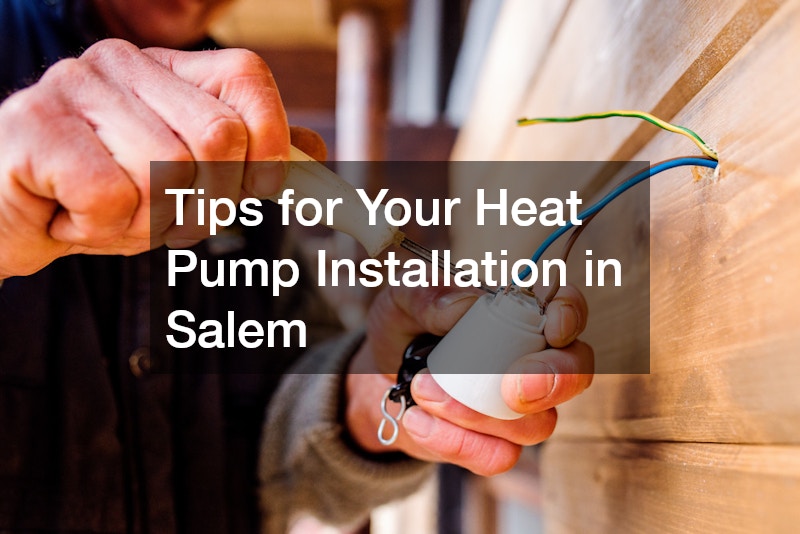
Installing a heat pump in your Salem home is an excellent way to improve energy efficiency and comfort. Heat pumps provide both heating and cooling, making them an ideal choice for the Pacific Northwest’s mild climate. Whether you’re upgrading an existing system or installing a new one, it’s important to be well-prepared for the installation process. Here are some key tips for a smooth and successful heat pump installation in Salem.
1. Choose the Right Heat Pump for Salem’s Climate
Salem’s climate is generally mild, with cool winters and warm summers, making heat pumps an excellent choice.
When selecting a heat pump, consider both the size of your home and your specific heating and cooling needs. For example, air-source heat pumps are highly efficient in mild climates and can handle both heating in the winter and cooling in the summer.
Ductless mini-split heat pumps are another popular option, especially for homes without ductwork. These systems allow you to control the temperature in individual rooms, making them energy-efficient and customizable to your home’s layout. Consulting with an HVAC professional will help you choose the right heat pump system based on your home’s unique requirements and Salem’s climate conditions.
2. Evaluate Energy Efficiency Ratings
When selecting a heat pump for your home in Salem, pay attention to energy efficiency ratings. The efficiency of heat pumps is measured by the Seasonal Energy Efficiency Ratio (SEER) for cooling and the Heating Seasonal Performance Factor (HSPF) for heating. A higher SEER and HSPF rating means better energy efficiency and lower utility bills.
For Salem’s climate, which doesn’t experience extreme temperatures, investing in a heat pump with high efficiency can reduce your energy consumption year-round. Look for models with the ENERGY STAR® label, which indicates that the system meets or exceeds federal energy efficiency standards.
3. Prepare Your Home for Installation
Before installation, it’s important to make sure your home is ready for the new heat pump system. Start by evaluating your home’s insulation. Proper insulation helps your heat pump work efficiently by keeping warm air inside during the winter and cool air during the summer. Make sure your attic, walls, and floors are well-insulated, and seal any gaps around doors and windows to prevent air leaks.
Additionally, clear the area around the installation site. For air-source heat pumps, the outdoor unit requires adequate airflow, so make sure there’s no debris, plants, or objects obstructing the area. Indoors, clear space around the installation site for easy access by the technicians.
4. Schedule a Professional Installation
Heat pumps are complex systems that require professional installation to ensure they work efficiently and safely. Always hire a licensed and experienced HVAC technician in Salem to install your heat pump. A professional will ensure that the system is installed correctly and according to manufacturer specifications, helping you avoid any future issues.
During the installation process, ask your technician to walk you through the operation and maintenance of your new heat pump. Understanding how to use your system properly will help you optimize its efficiency and prolong its lifespan.
5. Consider Upgrading Your Thermostat
A smart or programmable thermostat can enhance the efficiency of your heat pump. These thermostats allow you to control your system more precisely by setting schedules that align with your daily routine. For instance, you can program the heat pump to lower the temperature when you’re away and warm up the house before you return, saving energy and money.
6. Plan for Regular Maintenance
Once your heat pump is installed, regular maintenance is essential to ensure its longevity and performance. In Salem’s moderate climate, heat pumps can operate year-round, so scheduling bi-annual maintenance is important. Regular filter changes, inspections, and tune-ups will keep your system running efficiently and prevent costly repairs.
.
